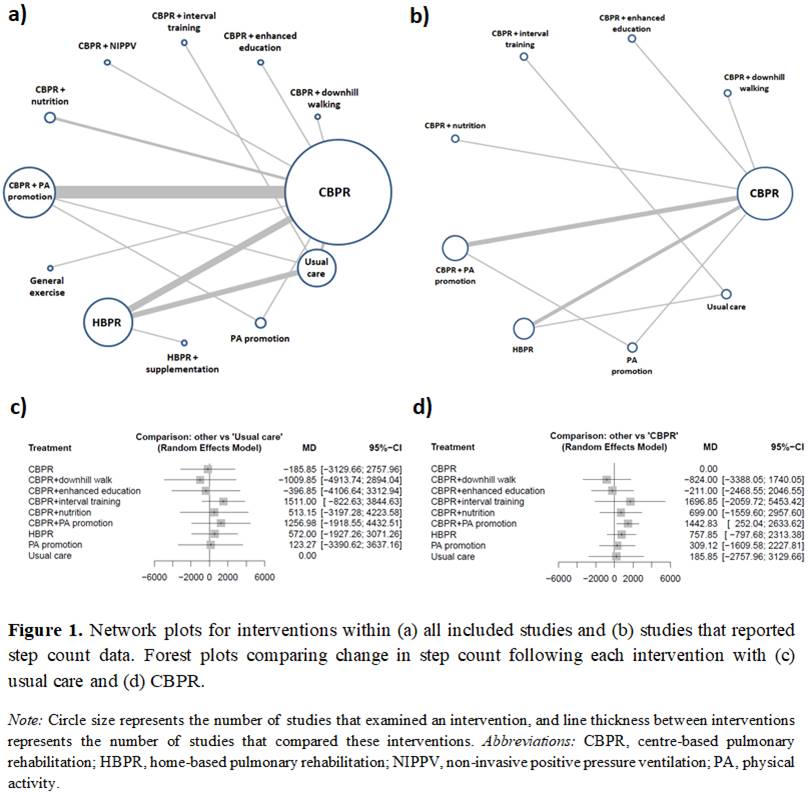Abstract
Introduction: Novel pulmonary rehabilitation (PR) models have led to innovations and adjuncts in PR components which may lead to differential responses in physical activity (PA).
Aim: To examine the relative effectiveness of different PR-based interventions on PA.
Methods: Randomised trials in chronic respiratory disease populations, where at least one intervention arm performed some form of PR, were systematically searched for on three electronic databases. Network meta-analyses compared PR-based interventions against usual care (UC) and centre-based PR (CBPR) on pre-post change in average number of steps/day.
Results: Out of 2853 yielded articles, 31 studies were eligible (2404 participants; 94% COPD). The most common interventions were CBPR (n=23), CBPR+PA promotion (n=11), home-based PR (HBPR; n=10), and UC (n=8; Fig 1a). Step count data from 14 studies (COPD only; n=1060) were included within the network meta-analyses (Fig 1b). No significant change in step count was observed in any PR intervention versus UC (Fig 1c); however CBPR+PA promotion resulted in a significantly greater change (?+1442 steps) versus CBPR (Fig 1d).
Conclusion: Whilst no single intervention showed a statistical benefit to daily step count, CBPR+PA promotion may be more effective than CBPR. The small number of studies for each comparison limits the assessment of superiority of PR-based interventions to improve PA.
